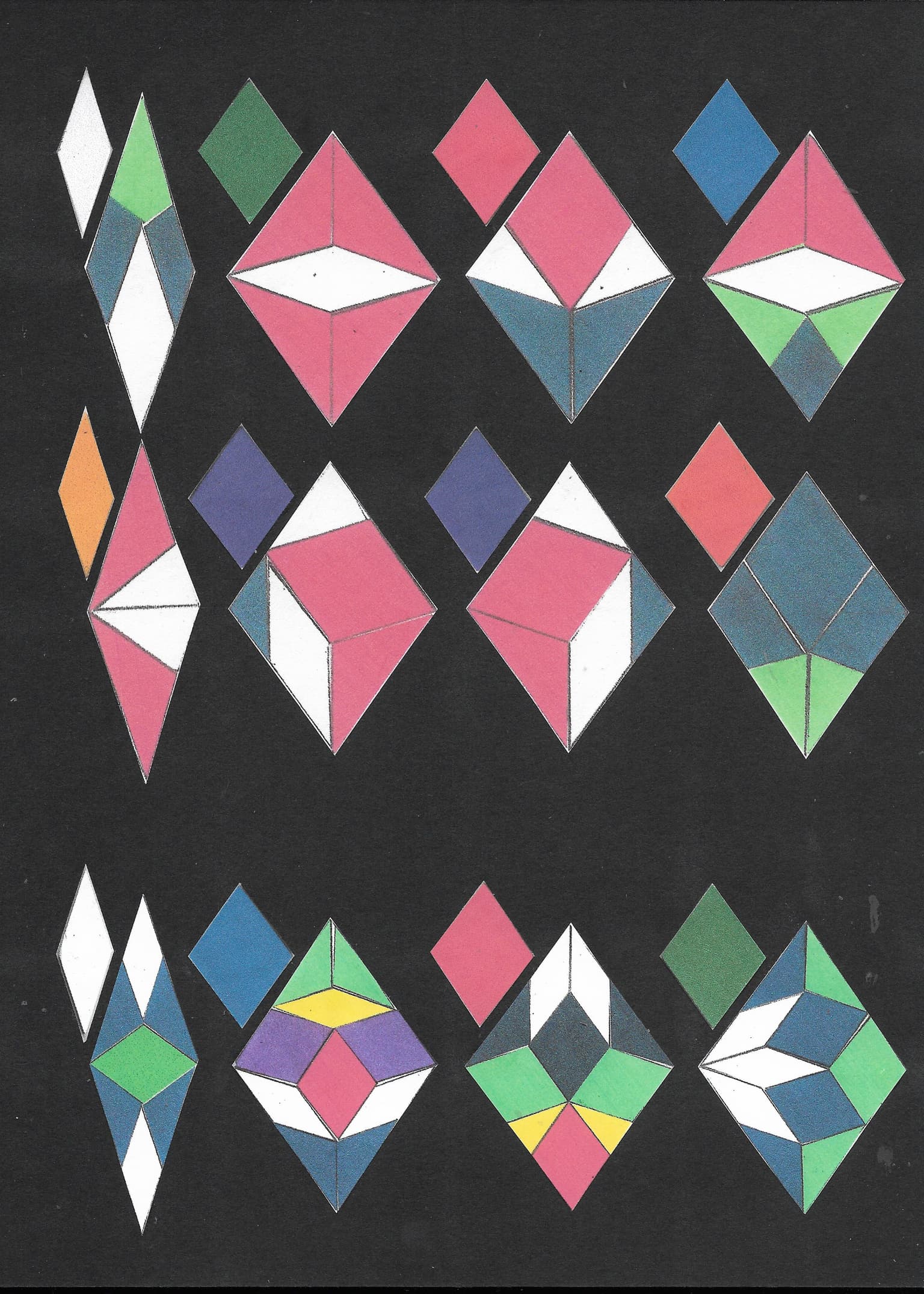Artists
Theo Schaad
Artist
Physics Department, University of Washington
Seattle, Washington, USA
Statement
Since the last Bridges Conference, I have been on a quest to find a quasiperiodic tiling with local 10-fold rotational symmetry using the substitution method. Two rhombic 10-fold tilings were discovered by Robert Ingalls in 1992 (Decagonal Quasicrystal Tilings, Acta Cryst. A48) using a pentagrid. The grid lines were spaced in a quasiperiodic Fibonacci series. It is known that if the dual grid is quasiperiodic, the tiling is also quasiperiodic. I learned from personal correspondence that Ingalls knew of a substitution method with an inflation factor of $\tau^3$ (where $\tau=\frac{1+\sqrt{5}}{2}$ is the golden ratio), but it is not elaborated in his paper. I created a puzzle to try out different ways to tile 5- and 10-fold patterns.
Artworks

5- and 10-fold Rosettes
30.0 x 23.0 x 17.0 cm
2 game boxes with 335 wooden tiles, one side painted in acrylics, the other side decorated with prints; 1 black display board 50 cm x 50 cm
2025